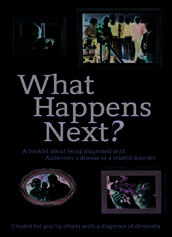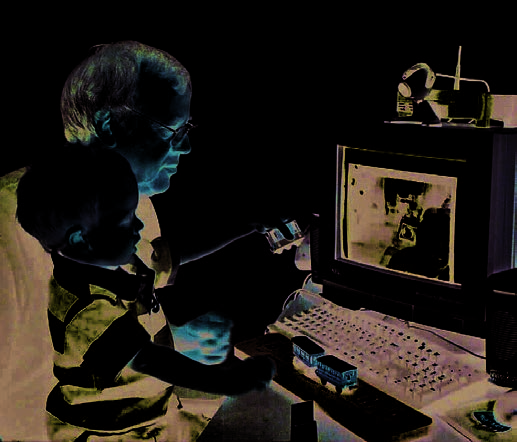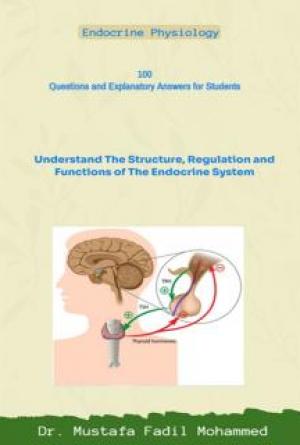PART
4
Improving Support
for Families
and Other
Caregivers

One of the greatest costs of AD can One of the hardest decisions that many be the physical and emotional toll
families face is whether and when to place
on family members, caregivers, and
a loved one with AD in a nursing home or
friends of people with the disease.
other type of care facility. Once this decision
The changes in a loved one’s personality and
is made, families must decide what type of
mental abilities; the need to provide constant,
care is best for the person and the family.
loving attention for years on end; and the demands Many investigators are working to identify of bathing, dressing, and other caregiving duties in strategies that can lead to improved quality of the later stages of the disease can be hard to bear.
care in various facilities, including adult day
Many caregivers must assume new and unfamiliar care centers, assisted living facilities, continuing roles in the family, and these changes can be both
care retirement communities, nursing homes,
difficult and sad. Not surprisingly, caregivers of
and special care units (separate areas within
people with dementia spend significantly more
nursing homes or assisted living facilities
time on caregiving tasks than do caregivers of
designed especially for people with
people with other types of illnesses.
dementia).
Who Are AD Family Caregivers?
Many primary caregivers are family raising children of their own.
Brothers and sisters: Siblings
members, and NIA-funded research Juggling two sets of responsibilities may assume primary responsibility
has shown that the value of informal is often tough for these members for care if they live close by. Many
family caregiving of people with
of the “sandwich generation.”
of these caregivers also are older
cognitive impairment adds up to
and may be coping with their own
Daughters-in-law: Many women
billions of dollars every year. Who
frailties or health problems.
in this group help take care of an
are these family caregivers?
older person with AD. They are
Grandchildren: Older children
Spouses: This is the largest group
the third largest group of family
may become major helpers in
of caregivers. Most are older, too,
caregivers.
caring for a grandparent with AD.
and many have their own health
Grandchildren may need extra
Sons: Although many are involved
problems.
support if their parents’ attention is
in the daily care of a parent with
heavily focused on the ill grand-
Daughters: The second largest
AD, sons often focus on the finan-
parent or if the grandparent with
group of primary caregivers is
cial, legal, and business aspects of AD lives in the family’s home.
daughters. Many are married and
caregiving.
ALZHEIMER’S DISEASE Unraveling the Mystery 63

P A R T 4 Improving Support for Families and Other Caregivers Research Findings Benefit
Caregivers
Although research on family caregiver
support is still in its early days, we have
already learned much about the unique
aspects of caregivers’ personalities and
situations. For example, it is well established that
AD caregivers often experience stress, anxiety,
depression, and other mental health problems as a
result of the continuing and demanding nature of
AD care. This chronic stress can have detrimental
effects on the physical health of caregivers. The
physical and emotional effects of AD caregiving
can last a long time, even after the death of the
person with AD.
On the other hand, research also has shown
that caregiving can have important positive effects,
AD caregivers do not all have the same
including:
psychological and physical response to caregiving.
For example, caregivers who have strong support
■ A new sense of purpose or meaning in life
systems and well-developed coping skills may be
■ Fulfillment of a lifelong commitment to a spouse
able to weather the stresses of caring for a loved
■ An opportunity to give back to a parent some
of what the parent has given to them
one with AD. Others who have few breaks from
caregiving responsibilities and/or have preexisting
■ Renewal of religious faith
illnesses may be more vulnerable to the physical
■ Closer ties with people through new relation-
ships or stronger existing relationships
and emotional stresses associated with dementia
care. Caregiver research is beginning to discover
effective ways to ease the burden of caregiving.
Researchers have learned that:
■ The information and problem-solving needs
of caregivers evolve over time as AD progresses.
Therefore, support programs should be tailored
to the needs of the caregiver at various stages of
caregiving. Programs can respond by offering
64 ALZHEIMER’S DISEASE Unraveling the Mystery
services and information geared to different
Where Are People with
stages of the disease.
Alzheimer’s Disease Cared For?
■ Traditions and attitudes about caregiving
vary across cultural groups. For example, some
■ Home
researchers have found that African-American
■ Assisted living facilities (those in the early stages)
caregivers use fewer formal in-home services than
■ Adult day care centers
do white caretakers. Some populations may find
■ Nursing homes
it difficult to publicly admit that a family member
■ Special care units
has AD and may be reluctant to seek help with
caregiving issues. Therefore, programs and services
for caregivers must be culturally appropriate and
sensitive to factors that positively and negatively
influence caregivers’ attitudes and ability to carry
ones, made life easier for them, improved their
out their responsibilities.
caregiving ability, improved the care recipient’s
■ Use of multiple types of support over an
life, and helped them keep their loved one at
extended period of time helps caregivers. For
home.
example, the Resources for Enhancing Alzheimer’s
■ Developing ways to help caregivers become
Caregiver Health (REACH) clinical trial showed
educated about AD, improve flexibility in
that caregivers who received 6 months of inten-
responding to caregiving demands, and learn a
sive help with caregiving strategies had significant variety of practical strategies can help. Studies improvements in overall quality of life. They also
are teaching caregivers how to read the emotional
had lower rates of clinical depression compared to and physical cues of the person with AD and to caregivers who did not participate in the program. understand the sequence of events that often The caregiving strategies included information
leads to inappropriate behaviors. They are also
sharing, instruction, role plays, problem-solving,
helping caregivers respond to the needs of the
skills training, stress-management techniques, and person with AD in a variety of creative ways, telephone support groups. Caregivers reported
such as maintaining flexibility in the face of
that taking part in REACH helped them feel
many demands, becoming educated about the
more confident in working with their loved
disease, learning practical strategies, using available
For Information About AD Support Groups
To find out whether an AD support group is operating in your area, contact:
■ NIA’s Alzheimer’s Disease Education and Referral (ADEAR) Center at 1-800-438-4380 or visit www.nia.nih.gov/alzheimers/alzheimers-disease-research-centers
■ Alzheimer’s Association at 1-800-272-3900 or visit www.alz.org ALZHEIMER’S DISEASE Unraveling the Mystery 65

P A R T 4 Improving Support for Families and Other Caregivers resources, involving other family members and
friends, and balancing the needs of the person
with their own needs.
■ Helping caregivers deal with the complicated
issue of whether and when to place a loved one
in a nursing home is an important aspect of
caregiver support. People with dementia are
at much greater risk of nursing home placement
than are other older people of the same age.
Placing a loved one in a nursing home may relieve
some of the burden of caregiving, but it does not
necessarily reduce caregiver stress or emotional
distress. Moreover, nursing home costs now
■ Helping caregivers stay physically active has
average more than $70,000 per year.
big benefits. Researchers have found that regular
One clinical trial tested the effects of an
moderate exercise is an important stress reliever for
enhanced counseling and support program on
caregivers. Exercise helps to reduce blood pressure
nursing home placement and caregiver health.
increases due to stress, improves sleep quality, and
This program for caregivers consisted of six sessions reduces psychological distress and depression.
of individual and family counseling, support
group participation, and on-demand telephone
EARLY-STAGE AD SUPPORT GROUPS:
counseling. Participants in the program were able
A VITAL SOURCE OF HELP
to delay placement of their loved ones in nursing
For families and friends who care for a person with
homes by about 18 months. Researchers attributed AD, talking with others who are going through the the effects of the program to greater tolerance for
same experience can be a vital lifeline. AD support
memory and behavior problems in the person with groups provide a place where caregivers can seek AD, improved satisfaction with the support
respite, express concerns, share experiences, get
provided by family and friends, and fewer
tips, and receive emotional comfort. NIA-funded
symptoms of depression. Moreover, it appears
Alzheimer’s Disease Centers, the Alzheimer’s
that the extra time at home did not come at the
Association, and many other organizations sponsor
expense of the caregivers’ sense of well-being.
in-person and online AD support groups all
around the country.
Improved diagnostic tests and increasing aware-
ness of AD mean that more and more people are
now being diagnosed at early stages of AD. People
66 ALZHEIMER’S DISEASE Unraveling the Mystery




in the early stages often still have good coping
arate groups; in others, people with AD and their
skills and are intensely aware of themselves and
caregivers are together for part of the session and
their symptoms. They also may feel considerable
apart for the remainder.
distress, embarrassment, and isolation because of a
Other types of early-stage support groups are
perceived stigma associated with the disease. As a
less structured. Members discuss topics of their
result, a growing number of people with early-stage own choosing, and the groups meet regularly over AD and their family members are looking for cop- an extended time. Members with AD may stay in ing strategies, meaningful activities, and mental
the group as long as they are able to meaningfully
stimulation. They are eager to educate themselves
take part in the discussion and activities.
about AD, share common experiences, and break
Early-stage support groups are not for everyone.
the potential barriers and isolation caused by their
Some people with early AD and their families may
diagnosis. This has led to the formation of early-
not benefit because of family conflict, denial, cogni-
stage support groups specifically designed to meet
tive impairment, or discomfort with the intimacy
their needs.
of a group experience. However, most participants
Some early-stage support groups follow a
report positive outcomes, such as a greater sense
structured model, with 1- to 2-hour sessions
of control over their lives and feelings that they
scheduled over 6 to 8 weeks. The sessions are
are not alone. Many participants find early-stage
led by a facilitator and discussion topics are
support groups helpful because they instill a spir-
determined in advance. Guest speakers provide
it of camaraderie, build coping skills, and forge
information and help on specific topics such as
relationships and emotional support that continue
legal and financial planning. In some programs,
to help the person with AD and the caregiver even
the person with AD and the caregiver meet in sep- after the sessions end.
What Happens Next?
It is a question many people and their families ask when AD is first diagnosed.
Members of an early-stage support group at the Northwestern University Alzheimer’s Disease Center in Chicago wrote What Happens Next? to help people with early-stage dementia cope with their feelings and the practical aspects of everyday life.
To view the booklet online, visit www.nia.nih.gov/alzheimers/publication/
what-happens-next.
ALZHEIMER’S DISEASE Unraveling the Mystery 67

P A R T 4 Improving Support for Families and Other Caregivers Taking Care of Mom or Dad at a Distance
Taking care of a parent with AD who lives
brothers decided to see whether videoconferencing
hundreds of miles away is a real worry facing
could be a way to keep in touch with her. They in-
many adults. “How can we make sure Mom gets the
stalled a computer with a video camera in her home so
best care possible if we’re not there all the time?”
they could check on her daily, helping fulfill her wish to
“What can I do to help Dad live at home for as long
continue living independently on the family farm while
as possible?”
assuring themselves that she was faring well.
That was the dilemma facing Ken Nixon and his
“We had a need, and we patched the system
two brothers in 2001. Their mother lived in an Arkan-
together at first,” says Ken. “It exceeded our
sas farming community and wanted to stay there. Ken expectations in being able to keep our mother and his brothers lived 3 to 5 hours away—close, but
independent and connected to the family. We could
not close enough.
call and have coffee with her every morning, and it
With funding from NIA, Ken and his brothers
got her day started off right. She had something to
created a multi-purpose, Internet-based system called
look forward to every day—one or two of her boys
AttentiveCare that is currently available to others faced was going to visit.”
with the same long-distance caregiving challenges.
After 6 months of using the home-grown system,
Back in 2001, broadband Internet service had just
Nixon decided to develop it to help other caregivers.
become available in their mother’s community, so the
In 2003, he applied for and received a grant from
NIA to refine the AttentiveCare prototype and test its
feasibility in providing informal, long-distance care to
people with AD.
He later received another grant to evaluate the
software, services, and caregiver usage and benefits
of the system in a variety of caregiving situations. The
participants in this study are distance caregivers of
persons with early- to moderate-stage AD who had
the AttentiveCare system installed in their own homes
and the homes of their family members with AD.
AttentiveCare now features videoconferencing,
multimedia reminders to help care recipients function
independently, and slide shows to keep care recipi-
ents connected with family. The system’s journal and
data logging capability also allows family caregivers
to maintain and share information about the care
Ken Nixon and his grandson use AttentiveCare to
recipient’s health and well-being, whether they are
check in with Ken’s mother.
across the street or thousands of miles away.
68 ALZHEIMER’S DISEASE Unraveling the Mystery

Conclusion
The future builds upon the events and
experiences of the past. That’s certainly true
of AD research. Our knowledge of AD is
advancing rapidly, and we have much to
celebrate in our scientific successes.
At the same time, we cannot forget that AD remains
an urgent problem for our Nation. The challenge is
to continue building on these discoveries so that we
can create a brighter future in which the potential of
successfully managing AD or even preventing this
terrible disease can become a reality.
Glossary
Acetylcholine—a neurotransmitter that plays
Axon—the long extension from a neuron that
an important role in many neurological functions, transmits outgoing signals to other cells.
including learning and memory.
Beta-amyloid—a part of the amyloid precursor
Amygdala—an almond-shaped structure
protein found in plaques, the insoluble deposits
involved in processing and remembering strong
outside neurons.
emotions such as fear. It is part of the limbic
Brain-derived neurotrophic factor
system and located deep inside the brain.
(BDNF)—a growth factor that stimulates survival,
Amyloid plaque—a largely insoluble
growth, and adaptability of some neurons.
deposit found in the space between nerve cells
Brain stem—the portion of the brain that
in the brain. Plaques are made of beta-amyloid,
connects to the spinal cord and controls automatic
other molecules, and different kinds of nerve
body functions, such as breathing, heart rate, and
and non-nerve cells.
blood pressure.
Amyloid precursor protein (APP)—the
Capillary—a tiny blood vessel. The brain has
larger protein from which beta-amyloid is formed. billions of capillaries that carry oxygen, glucose Apolipoprotein E—a protein that carries
(the brain’s principal source of energy), nutrients,
cholesterol in blood and that appears to play some and hormones to brain cells so they can do their role in brain function. The gene that produces this work. Capillaries also carry away carbon dioxide protein comes in several forms, or alleles: ε2, ε3,
and cell waste products.
and ε4. The APOE ε2 allele is relatively rare and
Cerebellum—the part of the brain
may provide some protection against AD (but it
responsible for maintaining the body’s balance
may increase risk of early heart disease). APOE
ε
and coordination.
3 is the most common allele and appears to play
a neutral role in AD. APOE ε4 occurs in about
Cerebral cortex—the outer layer of nerve cells
40 percent of all people with AD who develop
surrounding the cerebral hemispheres.
the disease in later life; it increases the risk of
Cerebral hemispheres—the largest
developing AD.
portion of the brain, composed of billions of
nerve cells in two structures connected by the
corpus callosum. The cerebral hemispheres control
conscious thought, language, decision making,
emotions, movement, and sensory functions.
70 ALZHEIMER’S DISEASE Unraveling the Mystery
Cerebrospinal fluid—the fluid found in
DNA (deoxyribonucleic acid)—a long,
and around the brain and spinal cord. It protects
double-stranded molecule within the nucleus of
these organs by acting like a liquid cushion and
the cell that forms chromosomes and genes.
by providing nutrients.
Early-onset Alzheimer’s disease—a rare
Chromosome—a threadlike structure in
form of AD that usually affects people between
the nucleus of a cell that contains DNA. DNA
ages 30 and 60. It is called familial AD (FAD) if it
sequences make up genes. Most human cells
runs in the family.
have 23 pairs of chromosomes containing
Entorhinal cortex
approximately 30,000 genes.
—an area deep within the
brain where damage from AD often begins.
Clinical trial—a research study involving
Enzyme
humans that rigorously tests safety, side effects,
—a protein that causes or speeds up a
and how well a medication or behavioral
biochemical reaction.
treatment works.
Free radical—a highly reactive molecule
Cognitive functions—all aspects of conscious (typically oxygen or nitrogen) that combines thought and mental activity, including learning,
easily with other molecules because it contains an
perceiving, making decisions,
















